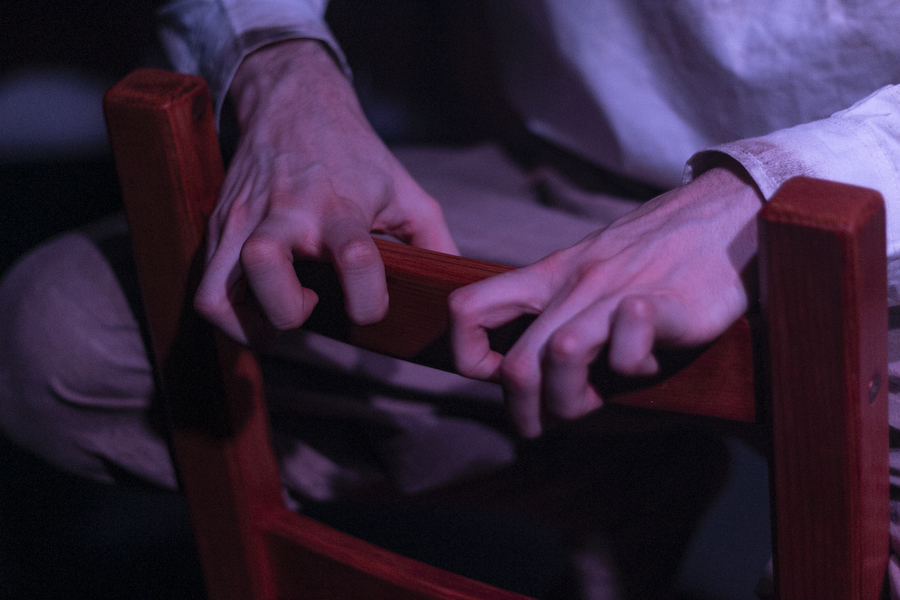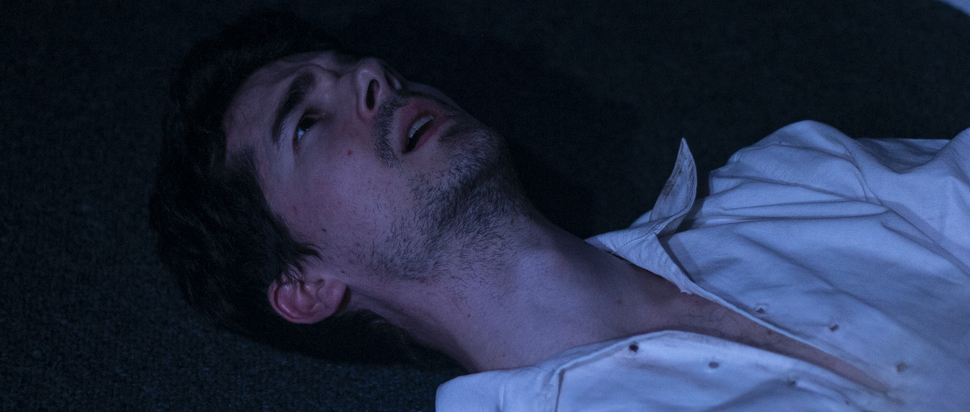The Rotting Hart: A new queer body horror
Daniel Orejon's new solo play, The Rotting Hart, blends body horror and queer desire – we chat to its creator, and director Flavia D'Avila, about the story behind the show
The connection between horror and queerness run deep into the history of the genre. From the monster in The Bride of Frankenstein, to Norman Bates in Psycho, to more recent cultural instalments such as American Horror Story, there is a marked tradition of horror being used to explore desire, repression, and the very nature of fear itself. Writer and performer Daniel Orejon delves into these themes for his new solo play The Rotting Hart, directed by Flavia D’Avila and part of a co-production between Crested Fools and Fronteiras Theatre Lab.
The Rotting Hart follows HIM, who lives with his father in isolation in the valleys of Toledo. After a stranger enters into the father and son’s lives, HIM begins to encounter an awakening to previously misunderstood feelings as he experiences a terrifying metamorphosis. We caught up with Daniel and Flavia to have a chat ahead of the play's premiere at the Edinburgh Horror Festival this weekend.
"At the very, very beginning, all I knew about this play was that a) it was going to be horror, b) it was going to be set in Spain, and c) it was going to be gay," Orejon explains. "I had a broad understanding of Western society's permissiveness of homosexuality during the last millennium. But as I realised fairly quickly, I had little to no idea of how anti-gay feelings had manifested throughout Spanish history."
Although a fictional play, Orejon and D'Avila conducted extensive research into the history of Spanish anti-gay legislation. D'Avila tells us: "I remember one of the first questions I asked Daniel was, 'How Spanish do you want to make this?' I was also interested in teasing out the presence of Muslims in Medieval Spain and the tensions between them and Christians, so we have added a layer of racial and cultural conflict to the piece as well." D'Avila’s upbringing provided her with a context for approaching the direction of The Rotting Hart: "I drew on my upbringing in southern South America, in a rural area on the border between Brazil and Uruguay. When I read Daniel's first draft, it immediately transported me back to that context and we had a lengthy conversation about the Spanish influence there during colonial times and the legacy of that period."

Production still from The Rotting Hart. Photo: Molly Wilders
In doing this, the play does what horror often does well: it provides a commentary on the insidious nature of prejudice. "I guess there are two strands of horror queerness that I can think of: the use of the 'other' as a vehicle for queerness and the depiction of queer and queer-adjacent individuals as monsters and dangerous individuals." However, Orejon is resistant to put The Rotting Hart in either of those categories. He says: "Our protagonist is the source of the horror that happens in the play, both real and imagined."
We also speak about the rehearsal process and how Orejon navigates a solo performance in which he must encapsulate a whole world. "Because of the way I write," he tells us, "everything that happens in the play feels very logical and sequential to me. Every turn of the plot feels both fresh and inevitable, as if that was the only way it could happen. It also adds a layer of passion, particularly with my favourite passages, those that I feel have the best cadence language-wise or those that resonate the most with my own lived experiences." He stresses that D'Avila was instrumental in developing the script in rehearsal. He notes that: "It is my opinion that the text, just like every other aspect of a theatre production, should be malleable and adapted whenever required by those involved."
As for how the duo want the audience to feel, D'Avila wants more than just the cheap thrills associated with horror films: "I always want an audience to feel challenged and enlightened. I also hope that makes people reflect on how far we have come historically in terms of our prejudices, but at the same time realise we still have a lot of work to do."
The show is less about inflicting fear, but unsettlement, as Orejon explains. "We aimed to create a show that would make the audience uncomfortable, either through suggestions of gore and bodily transformation or, more importantly, through toxic depictions of gay feelings and experiences. Although The Rotting Hart is a period show, the facets of gay culture that inspired it are very real and contemporary: rigid ideas of dichotomised roles, macho culture, the consequences of being raised in an environment of stoicism... The show pushes everything to the extreme."
The Rotting Hart, Banshee Labyrinth (Cinema Room), until 30 Oct, 8pm, book a seat from £5 or pay-what-you-can on the door, part of Edinburgh Horror Festival
